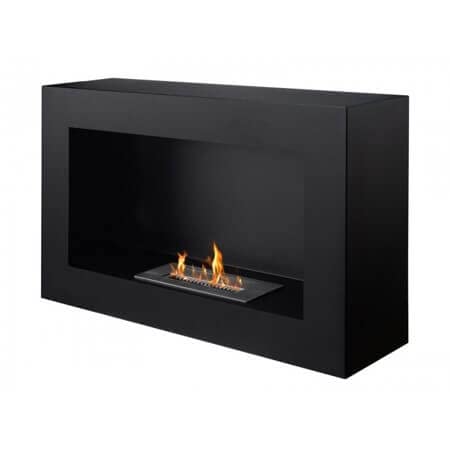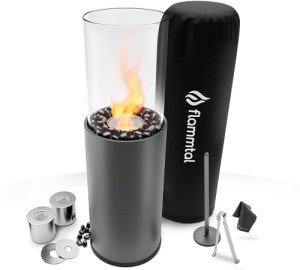Bioethanol Freestanding Stove Tools To Make Your Daily Lifethe One Bio…
페이지 정보

본문
 Bioethanol Freestanding Stove
Bioethanol Freestanding StoveBioethanol freestanding stoves are a great way to build your dream home. As they don't require a chimney or flue, installation is simple and won't interfere with your home.
When choosing the right stove, you need to be able to balance the initial investment with the long-term cost of fuel. You can calculate your fuel costs by checking specifications such as the burner reservoir size and the height of the flame.
Freedom of Place
A bioethanol stove is an innovative and stylish alternative to traditional wood burning fireplaces and wood burners. They are a great option for many rooms and homes since they don't require a chimney. They use an ethanol-based liquid fuel that produces no harmful fumes or smoke. They provide a convenient and flexible heating solution.
A freestanding bioethanol fireplace could be used to create an element of focal point that's elegant and cozy in any space, whether it's as an accent piece, or as a centerpiece in your living area or as an intimate backdrop for hosting guests. The size of the flame can also be altered to fit your preferences. A larger flame generates more heat, while smaller ones produce a more romantic glow. The finish and colour of the stove will also affect the visual impact. Neutral shades like black or white blend well with most interior designs While bolder shades can stand alone bioethanol fireplace out or complement existing furnishings.
Bioethanol stoves can be installed in many ways, ranging from simple plug and play wall-mounted models that can be fitted within a matter of hours to more elaborately designed floor or ceiling-mounted units. Some models have remote controls that let you control the flames and heat from the comfort of your sofa or armchair.
The cost and maintenance of the bioethanol stove are important factors to consider. Although the initial investment may be more expensive than traditional fires, there are often lower ongoing costs since there is no requirement to regularly clean or replace of ash and logs. It is also important to consider the amount of bioethanol that your stove uses per hour. This will affect how often it needs to refill, and the total operating costs you will pay over the course of.
Consult a specialist prior to installation if you are considering the installation of a bioethanol stove. This will ensure that the stove is configured and positioned properly to ensure performance and safety. They can also give you suggestions on how to maintain your stove to ensure that it looks and functions like new for as long as possible.
Aesthetics
When compared with traditional fireplaces and stoves, a freestanding bioethanol fire is incredibly simple to use. All you have to do is fill the burner tray with the liquid ethanol free standing fireplace fuel and ignite it. After the flame is lit, you can adjust the intensity of the flame and its height to suit your preferences. The flame emits a beautiful warm glow, which instantly transforms any space and makes it feel cozy.
There are a variety of stylish designs to choose from, making them suitable for modern and traditional homes. Some of the most popular models feature a curved glass that lets you see the flames clearly and a fireplace log holder, so it looks like a traditional wood-burning stove. Some, like the Oslo from Henley has a modern design and come with an open flame effect, which is ideal to create a warm and cozy ambience without any hassle or maintenance.
The majority of bioethanol stoves are simple to install and require minimal maintenance. The fact that they do not produce smoke or ash means you will not have to deal with the mess created by burning wood. The pure burning of bioethanol fuel also means that you don't have to worry about harmful air pollutants.
It is important to remember that all bioethanol fireplaces do require adequate ventilation. This is because they require oxygen during combustion, and failure to do so could result in your stove not burning or even burning to the ground. Fortunately, most stoves have built-in safety mechanisms which shut down the flame when oxygen levels are too low.
It is also essential to ensure that your bioethanol stove is positioned away from any materials that could ignite such as curtains or soft furniture. Some models have an automatic shut-off when they are left unattended for too long. This helps to improve security and reduce the chance of damage. Finally, it's a good idea to avoid using solid fuels in your bioethanol stove and go for the liquid ethanol alternative instead. This will not only keep your home clean but also save you money and lessen the environmental impact.
Efficiency
best freestanding bioethanol fireplace stoves made of bioethanol often referred to as bio fuel or ethanol fires fireplaces, use liquid ethanol to generate real flames. Their high efficiency and sleek designs have been a favorite choice for modern homes looking to reduce carbon footprints as well as improve the appearance of living spaces. To ensure a safe, enjoyable experience, it is essential that consumers are aware of the security precautions and the manufacturer guidelines.
Bioethanol fuel is an energy source that can be harvested year after year. It is produced by fermenting sugars and starch elements derived from plants such as straw, sugar cane and maize, which is then put through a distillation process to yield the fuel. When the ethanol liquid is ignited, it releases three main by-products: heat and water vapour. These by-products are not harmful to humans or animals. This makes bioethanol a sustainable alternative to fossil fuels.
While the nature of the fuel means bioethanol stoves do not emit harmful smoke or ash, they require adequate ventilation in order to operate safely. They should only be well-ventilated and away from any combustible materials. Certain bioethanol stove models have adjustable burner trays, which allow users to alter the height of the flames, which can reduce heat output and save fuel.
The power output of a bioethanol freestanding stove can vary from model to model but the vast majority have a maximum output of 1 kW. This is ideal for heating smaller areas or as a supplementary source of heat to warm up larger areas.
Bioethanol fireplaces can be a stylish and modern heating option for your home. They are also an efficient way to save money on utility bills. You can enjoy the aesthetics of a free standing bio ethanol stove fireplace and its warmth without having to pay for expensive maintenance by following the guidelines of the manufacturer and taking safety precautions. As more people become aware of the environmental impact their daily activities have the demand for bioethanol stoves is expected to grow.
Safety
Bioethanol stoves must meet certain safety standards to be used as an energy source. They don't create harmful byproducts such as carbon monoxide, and are safe to use in rooms with an open flame. Like all heating solutions, however, ventilation is required to ensure the optimal combustion of the appliance and to eliminate harmful byproducts. In addition, attention to storage of the fuel, the environment in which it is installed and maintenance can avert possible issues.
Another safety benefit is that unlike gas fireplaces that use ethanol, ethanol fires don't have a connection to an oil line, thereby avoiding the possibility of leaks or accidents with conduits filled with noxious fuel. Additionally, because the fuel is liquid, if it is able to escape the boundaries of the burner when burning, it will follow the flame, preventing the spread of a fire that could lead to injuries to property or to individuals.
bioethanol fire freestanding fireplaces are an excellent alternative to gas and wood fireplaces since they don't require a chimney. They can be used in many different rooms and homes, including flats, apartments, and conservatories. They also produce a significant amount of heat for their size and don't emit any smoke or ash, making them an ideal alternative to wood and gas fireplaces.
You can pick from a wide range of designs and finishes that are appropriate for your home and space. You can also shop by brand, as established and trusted names typically have higher prices but provide a guarantee of high-quality and after-sales support.
 Ultimately, the choice you make will be based on a equilibrium between your budget and the long-term costs of operation. Make sure to consider factors such as the burn time of each fill (usually up to five hours), the rate of consumption of fuel and your usage patterns. A precise estimate will assist you in determining if the initial investment is worthwhile and will also give you an idea of your monthly or annual fuel costs. You should also think about the accessories you might require, such as an airflow controller or remote.
Ultimately, the choice you make will be based on a equilibrium between your budget and the long-term costs of operation. Make sure to consider factors such as the burn time of each fill (usually up to five hours), the rate of consumption of fuel and your usage patterns. A precise estimate will assist you in determining if the initial investment is worthwhile and will also give you an idea of your monthly or annual fuel costs. You should also think about the accessories you might require, such as an airflow controller or remote.- 이전글Driver Jobs In South Africa 24.11.27
- 다음글8 Tips For Boosting Your Search Engine Optimization Agency Game 24.11.27
댓글목록
등록된 댓글이 없습니다.














